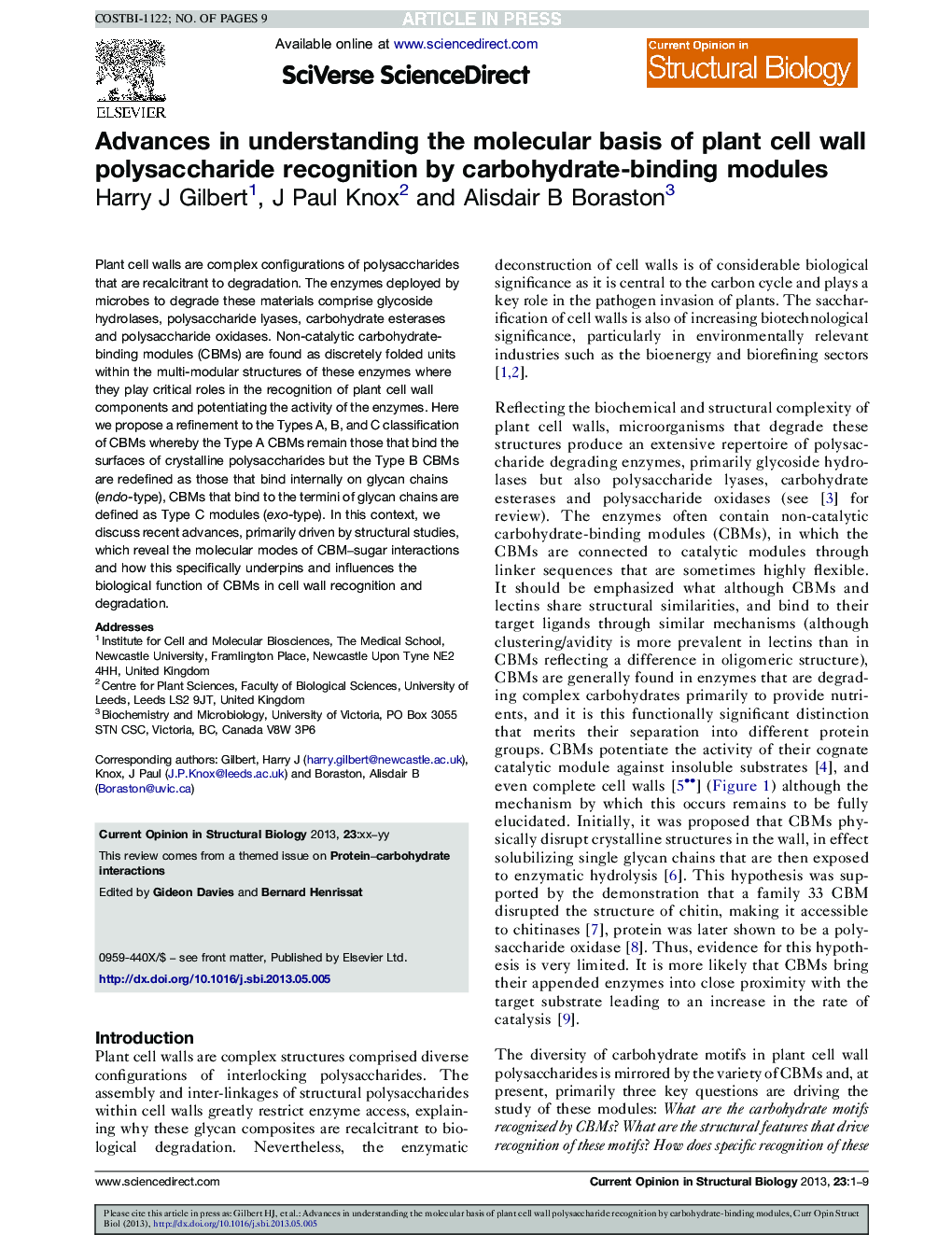| Article ID | Journal | Published Year | Pages | File Type |
|---|---|---|---|---|
| 10822592 | Current Opinion in Structural Biology | 2013 | 9 Pages |
Abstract
Plant cell walls are complex configurations of polysaccharides that are recalcitrant to degradation. The enzymes deployed by microbes to degrade these materials comprise glycoside hydrolases, polysaccharide lyases, carbohydrate esterases and polysaccharide oxidases. Non-catalytic carbohydrate-binding modules (CBMs) are found as discretely folded units within the multi-modular structures of these enzymes where they play critical roles in the recognition of plant cell wall components and potentiating the activity of the enzymes. Here we propose a refinement to the Types A, B, and C classification of CBMs whereby the Type A CBMs remain those that bind the surfaces of crystalline polysaccharides but the Type B CBMs are redefined as those that bind internally on glycan chains (endo-type), CBMs that bind to the termini of glycan chains are defined as Type C modules (exo-type). In this context, we discuss recent advances, primarily driven by structural studies, which reveal the molecular modes of CBM-sugar interactions and how this specifically underpins and influences the biological function of CBMs in cell wall recognition and degradation.
Related Topics
Life Sciences
Biochemistry, Genetics and Molecular Biology
Biochemistry
Authors
Harry J Gilbert, J Paul Knox, Alisdair B Boraston,
